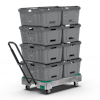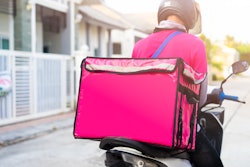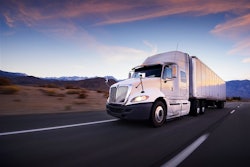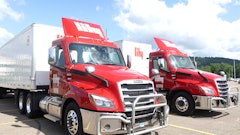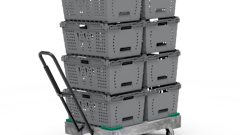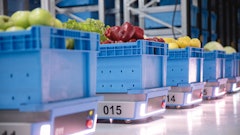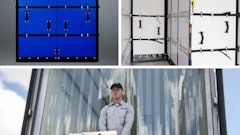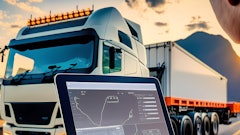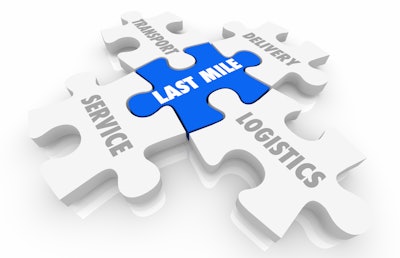
It’s been a tumultuous year for those trying to get things from Point A to Point B. Disrupted supply chains, a blockage in the Suez Canal, dock workers going on strike and the continuing e-commerce surge has made it a less than easy ride for transport and logistics professionals. Like the broader logistics industry, last-mile delivery has found a way to adapt to meet changing and unpredictable conditions.
While the gig economy isn’t new, its benefits have been felt tenfold during the pandemic.
As employment needs shifted over the past year, gig workers helped plug workforce gaps. According to a Gallup study, gig workers now make up 36% of the U.S. workforce. But, the gig economy has also caused a dramatic shift in how last-mile delivery operates and finding more staff to increase capacity is only half of the battle. In the final stages of order fulfilment when the physical touchpoint with the customer happens, poor service can leave a lasting impression on both the delivery firm and the retailer. In many cases, technology adoption is still lacking, making it harder to attract and retain talent who are looking for the best companies to work for in a competitive market. It’s never been more important to onboard new workers and to serve the end customer efficiently.
Technology to support the last-mile
Smartphone-based app solutions, often within a bring-your-own-device (BYOD), corporate-owned, personally-enabled (COPE) or hybrid model, are already part of the last-mile technology toolkit for over two-thirds (67%) of postal and logistics providers. Each model offers differing benefits, from the flexibility offered within one device rather than multiple, the ability to standardize IT requirements to higher productivity with workers feeling like they are obtaining a perk or benefit. Logistics businesses can easily deploy smartphones at scale and onboard workers with either reduced or removed fixed costs, helping to streamline processes. Plus, the bonus of not having dedicated scanners that may sit dormant in quieter times.
With 27% of those who have still not made the switch from using dedicated scanning devices to smartphones stating they have considered a BYOD strategy, it’s likely we will see even more businesses take advantage of BYOD moving forward.
Delivery drivers are able to quickly download an app that allows them to scan multiple items in one go and view instructions and information on an augmented reality (AR) overlay to help speed up loading at depots and reduce the time taken to find packages in vans. This helps drive productivity in services centres and on the go.
Preparing for peak
Moving away from specialist hardware saves time with the speed of onboarding and training new drivers, particularly important for an industry that sees demand peaks. For example, when deliveries need to be scaled up during events such as Christmas, it’s easy to bring on new gig economy workers without having to hold lengthy technology inductions. Again, downloading an app can provide instructions as they go via AR. Saving time for both workers and last-mile businesses – it’s a win-win for all.
In the United States, we’re seeing that larger companies with fleets of 10,000 or more employees are adopting a BYOD model -- 93%, compared to smaller companies at 65%. Of those who have adopted BYOD, 79% have reported the performance of smartphones in last-mile delivery operations have delivered the benefits they expected. In fact, 54% of postal and logistics providers have begun to use smartphone as their primary devices.
By adopting a BYOD model, smartphones have proven to be a vital tool in increasing efficiency in delivery models. Companies have found that the combination of user friendliness, the ability to help drivers complete last-mile tasks more quickly and the overarching cost savings are among the top contributing factors to employee satisfaction. With 38% companies in the United States struggling to find qualified drivers, it is essential to invest in resources that are not only going to give employees an optimal experience, but also attract new hires as well. By investing in BYOD technology, it ultimately benefits companies by not only keeping costs down by not having to purchase multiple devices, but also allows them to be more nimble with their workforce.
Deploying smartphones in the last-mile is also more convenient for delivery drivers as they can work from one device, which they already have familiarity with, and adopt the technology from the offset. This helps foster workers feeling more equipped for the job and more inclined to stay which is important in such a competitive labor market. Plus, as some drivers may work across multiple companies, this can make the working day significantly more flexible with just the need to download an app.
Giving customers a seamless experience
Consumers have become accustomed to being mobile-first, and last-mile delivery is no different. To be fit for the future in the short- and long-term, last-mile delivery businesses need their entire operation to be as seamless and efficient as possible. Today’s customer expects a seamless experience, and a late delivery or even an unhappy driver can cause reputational damage that impacts long term loyalty.
The most successful businesses are making long-term investments in technology to boost their operational efficiency, drive down costs and create much slicker tools to help attract and retain last-mile workers and improve user experience and customer experience. The industry can’t afford to wait for another crisis before evolving to the needs of the market. It’s time to future-proof by investing in people and the right technology to streamline processes and ensure customer and staff needs are met.




